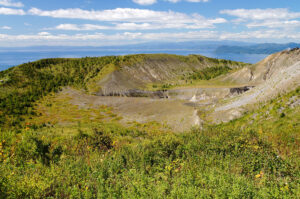Overview (history, characteristics, attractions)
Kodai Hasu no Sato is a park and plant viewing spot located in Gyoda City, Saitama Prefecture, that is centered around lotus. Many types of lotus, including ancient lotus, are planted in the large pond in the center of the garden, and in the summer, you can enjoy the sight of the flowers blooming all over the place. The park is equipped with observation spaces, walking paths, and rest areas, making it popular with photography enthusiasts, families, and visitors who come to observe nature.
The name "Ancient Lotus" comes from lotus species (such as Oga lotus) that have been revived and cultivated from ancient seeds, and the attractive appearance of the flowers evokes a sense of timeless history. The flowers are particularly gorgeous in the morning when they open, and the white and pink lotus flowers shining in the early morning light are a sight to behold.
Highlights
- A cluster of ancient lotus flowers spreads across the pond: The best time to see them is from late June to early July, but this may vary depending on the species.
- Observation deck/observation point: You can get a close-up look at the flowers, leaves, buds, etc. from the observation deck and walkway that overlook the pond.
- Opening and closing of flowers in the early morning: Lotus flowers tend to open in the early morning and close in the afternoon, so if you want to see their beautiful blooming appearance, early morning is the best time.
- Photo spots: There are many spots suitable for taking photos that make use of the flowers, leaves, and lotus silhouettes reflected on the water surface, and the light just after sunrise is beautiful.
- Seasonal Events: During the peak lotus viewing season, events such as the Ancient Lotus Festival, photo exhibitions, and guided tours are sometimes held (events vary from year to year).
Access (nearest station, transportation, etc.)
- Train + Bus / Walking: The most common way to get there is by taking a local bus or taxi from the nearest major station. You can also access the area by bus or taxi from any station in Gyoda City (please check the timetable and service status in advance for details).
- By car: There are routes to get there from the Kan'etsu Expressway, Tohoku Expressway, and other roads via national and prefectural roads. Parking lots are often available within the park or nearby, but they may fill up during peak viewing seasons, so we recommend arriving early.
- Bicycles: The surrounding area is relatively flat, so many people visit by bicycle, making it convenient to combine cycling with touring nearby tourist attractions.
*The specific nearest station, bus times, and parking lot locations and fees may change. Please check the official website or the city's tourist information for the latest information before visiting.
Estimated stay (estimated time required)
- Short visit: 30 minutes to 1 hour (enough to walk around the entire pond and take a few photos)
- Relaxed viewing: 1-2 hours (including leisurely strolls around the observation deck and surrounding facilities, taking photos and taking breaks)
- Combine with sightseeing in the surrounding area: Half a day to a full day (when combining with nearby spots such as Sakitama Kofun Park and Oshi Castle Ruins)
Nearby spots
- Sakitama Kofun Park: A historical park with a large group of ancient tombs. A popular spot to experience Saitama's ancient history.
- Oshi Castle Ruins (Gyoda Castle Ruins): The remains of Oshi Castle, known for movies and history. There is a museum and a castle tower-style exhibition facility.
- Tabi-related museums and historical sites: Gyoda once flourished as a tabi production area, and there are related exhibition facilities.
- Local restaurants and farm shops: There are many shops where you can enjoy seasonal produce and local gourmet food.
Things to be aware of (crowds, manners, seasonal precautions, etc.)
- Crowds: During the peak viewing season (mainly during the lotus blooming season in summer), it gets crowded on weekends and on event days. If you want to take your time looking around, we recommend visiting on a weekday or early in the morning.
- Early morning recommended: The lotus flowers bloom in the morning and close in the afternoon, so if you want to get the best shots, the best time is early in the morning (right after the park opens to mid-morning).
- Heatstroke prevention: The best time to see the flowers is when temperatures rise. Don't forget to bring a hat, drinks, sunscreen, and other heat protection.
- Insect repellent: As the area around the pond is near water, mosquitoes and other insects are likely to appear. Please bring insect repellent spray and long sleeves.
- Manners: Please be considerate of your surroundings by not damaging flowers or leaves, not entering the pond, sticking to designated footpaths and photography areas, and taking your trash with you.
- Pets: Whether pets are allowed in the park and rules on keeping them on leashes vary depending on the facility. Please be sure to observe proper etiquette and not cause any inconvenience to others.
- Check the latest information: Flowering conditions, event dates, parking congestion, opening and closing times, etc. may change depending on the year and weather. Please check the official website or city tourism information before visiting.
Please use this information to plan your visit and enjoy the beautiful flowers of the ancient lotus alongside the history and culture of the surrounding area. If necessary, please let us know and we will provide you with the latest links to the nearest train station, bus schedules, and event information.



